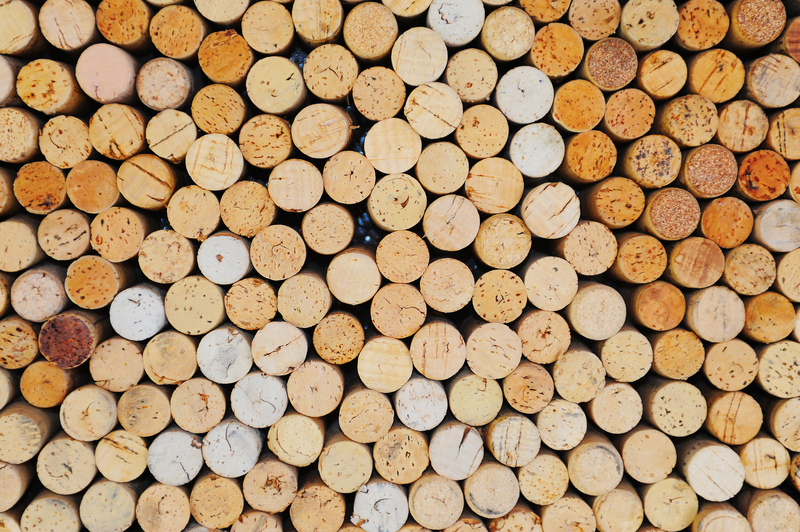Creative Ways to Responsibly Dispose of Your PPE Waste
The global surge in PPE (Personal Protective Equipment) usage since the COVID-19 pandemic has brought vital protection--along with a mounting environmental concern. Discarded masks, gloves, face shields, and gowns now contribute to landfill mass, pollute our waterways, and pose threats to wildlife. Yet, you don't have to let your PPE waste burden the planet. In this article, we'll explore innovative, eco-friendly, and responsible ways to dispose of your PPE waste, ensuring you stay safe while protecting the world around you.

Why Responsible PPE Waste Disposal Matters
Improper disposal of PPE waste harms our natural ecosystems and can spread pathogens. Single-use masks and gloves can linger in the environment for years, breaking down into microplastics that contaminate food chains. Traditional disposal methods--like tossing PPE into household bins--only shift the problem elsewhere.
For a safer, cleaner, and healthier community, it's crucial to find creative, responsible solutions for PPE waste management. Let's explore some of the most effective and innovative options available.
Understanding the Types of PPE Waste
Before choosing a disposal method, it's helpful to know the main kinds of PPE waste:
- Disposable Masks: Usually made from non-woven polypropylene plastic.
- Reusable Cloth Masks: Often cotton or polyester; can be washed and reused.
- Nitrile, Latex, or Vinyl Gloves: Varying biodegradability and recyclability.
- Face Shields and Goggles: Typically made from durable plastics.
- Protective Gowns and Aprons: Disposable (plastic) or reusable (fabric).
Best Practices for PPE Waste Disposal
When disposing of PPE, always prioritize personal safety and community health. Before exploring creative options, keep these core recommendations in mind:
- Always wash your hands thoroughly after handling used PPE.
- Never litter PPE items--they can contaminate public spaces and waterways.
- If PPE is contaminated with bodily fluids, dispose of it in sealed bags per local health guidelines.
- Educate family, friends, and coworkers about safe disposal practices.
The Hierarchy of PPE Waste Disposal
Following the waste management hierarchy--Reduce, Reuse, Recycle, and Dispose--is an empowering strategy for minimizing PPE's environmental impact.
- Reduce: Choose reusable PPE whenever safe and practical.
- Reuse: Clean and sterilize personal items wherever possible.
- Recycle: Seek out recycling programs specifically for PPE.
- Dispose Responsibly: For non-recyclable items, use recommended disposal channels.
Creative Disposal Solutions for PPE Waste
Ready for innovative ways to reduce your PPE footprint? Here are the leading creative and eco-conscious options for disposable masks, gloves, and other protective equipment:
1. Participate in PPE Recycling Programs
Some organizations now accept used PPE for recycling or energy recovery. For example, TerraCycle and other environmental groups have launched PPE recycling boxes designed for households, businesses, schools, and healthcare providers.
- How It Works: Collect your PPE, follow specific guidelines (usually no contaminated or wet items), and mail it in a prepaid box.
- What Happens Next: The collected waste is sorted, sterilized, and converted into plastic pellets or fuel, giving used PPE a new purpose instead of sending it to landfill.
- Tip: Encourage your workplace or community center to host a PPE recycling station to maximize impact.
2. Upcycle Used PPE into Art or Utility Items
Creative minds around the globe have turned discarded PPE into bold art installations to raise environmental awareness. You can also try upcycling single-use masks and gloves into household items--like stuffing for cushions (after proper cleaning), or as materials for garden protection.
- DIY Projects: Weave used plastic masks into garden scarecrows, or create outdoor planters from sterilized face shields. Let your imagination run wild!
- Classroom or Community Art: Organize workshops with sanitized PPE items to build sculptures, collages, or environmental displays.
- Note of Caution: Always thoroughly clean PPE before using it in DIY projects, and avoid projects that put people in direct contact with soiled materials.
3. Convert PPE into Energy or Building Materials
Some cities are pioneering waste-to-energy programs, where non-recyclable PPE is incinerated in specialized facilities that capture harmful emissions and convert heat into power. Similarly, research institutions are developing ways to turn shredded masks and gloves into eco-friendly construction materials.
- Energy Recovery: While not available everywhere, check if your local waste facility offers PPE waste-to-energy processing--an option preferable to landfilling.
- Plastic Blends for Construction: Mixing decontaminated mask plastics into asphalt or concrete can add strength, durability, and recycling value to roadways and buildings.
4. Support Innovative PPE Recycling Startups
A new wave of startups is tackling the PPE waste challenge by inventing fresh solutions. Some transform used masks into reusable shopping bags or durable outdoor furniture; others aim to decompose masks using special composting processes. Seek out local or online initiatives, and get involved!
- Check Community Resources: City websites or environmental forums often share opportunities to contribute PPE to innovative pilots or research projects.
- Stay Informed: The PPE waste recycling field is rapidly changing--keep an eye out for local collection days or new drop-off points.
How to Responsibly Dispose of Specific PPE Items
Masks
Disposable surgical masks and N95 respirators cannot be recycled in most traditional municipal bins due to contamination and material blends. However, here's how you can ensure responsible disposal:
- If contaminated: Bag used masks in a sealed plastic bag before disposing of them with general waste to prevent virus spread.
- If clean or unused: Seek out specialty recycling programs, or contact local pharmacies and clinics about take-back schemes.
- Cloth Masks: Wash, disinfect, and reuse. When they're too worn for use, cut them up and use as cleaning rags or stuffing for crafts.
Gloves
Nitrile gloves are preferred for hygienic reasons but present challenges for recycling.
- Disposal: Remove gloves safely (turn inside out), seal in a bag, and place in the trash if no PPE recycling option is available.
- Creative Use: Repurpose clean gloves for gardening, DIY projects, or as paint applicators for home improvement tasks.
Other PPE Items
- Face Shields and Goggles: Disinfect and reuse as much as possible, or donate to community organizations if in good condition.
- Gowns and Aprons: Cloth versions can be sanitized and reused; single-use types should be sealed in bags and sent to waste-to-energy or special PPE programs if available.
Tips for Reducing PPE Waste
The most sustainable approach is minimizing the initial generation of waste. Here's how to reduce your PPE footprint:
- Opt for Reusables: Purchase high-quality, washable masks and face shields. Buy cloth gowns and gloves for low-risk environments.
- Bulk Purchases: Avoid single-use packaging by buying PPE in larger volumes and sharing within your household or workplace.
- Store PPE Properly: Keep unused PPE in a clean, dry location to extend its lifespan.
- Advocate for Regulation: Support legislation and company policies that require or incentivize eco-friendly PPE and responsible waste management.
- Raise Awareness: Share responsible disposal tips with your peers, community, and online networks.
Engaging Your Workplace or Community
Collective action multiplies impact. Here's how to foster responsible PPE waste disposal at scale:
- Launch a PPE Waste Drive: Organize collections for specialty recycling or donation to artists, schools, or innovators.
- Create Visual Reminders: Place posters and informational signs about PPE waste in offices, schools, and gathering places.
- Work with Local Authorities: Request more PPE disposal points and clear guidance on how to handle different types of waste safely.
Frequently Asked Questions about Responsible PPE Waste Disposal
Can disposable masks and gloves be recycled?
Most curbside recycling programs don't accept PPE due to contamination and material limitations. Specialty programs--like those from TerraCycle--do recycle PPE but may charge a fee or have limits on the types of items accepted.
Is burning PPE at home safe or legal?
No. Home incineration of PPE is hazardous, releases toxic fumes, and is illegal in most areas. Only certified waste-to-energy facilities are equipped to handle such materials safely.
How do I know if my city accepts PPE for recycling?
Contact your local municipal waste authority or check their website for up-to-date guidance on PPE waste recycling and disposal policies.
Can I decontaminate disposable PPE myself for reuse?
While some sterilization methods are effective for N95 masks (under strict guidelines), most disposable PPE is designed for single use. Reusing single-use items without approved methods can risk your safety.

Conclusion: Make PPE Waste Disposal Part of Your Sustainability Journey
We all rely on PPE to keep ourselves and our communities safe. By embracing creative and responsible ways to dispose of PPE waste, you support a healthier environment and inspire others to do the same. Whether you're joining a recycling program, upcycling masks into art, or advocating for change in your community, every action makes a difference.
The next time you reach for a mask or a pair of gloves, remember: your choice extends beyond protection--it's part of shaping a cleaner, greener future for all.
